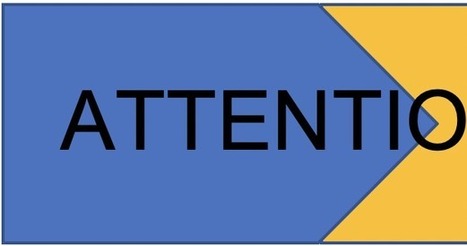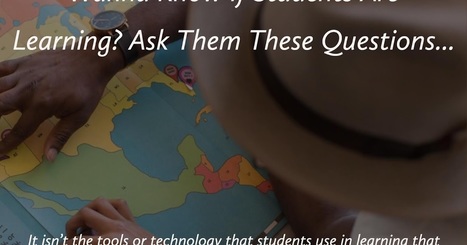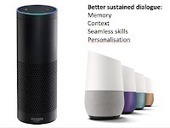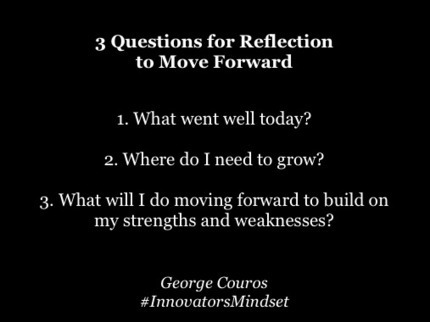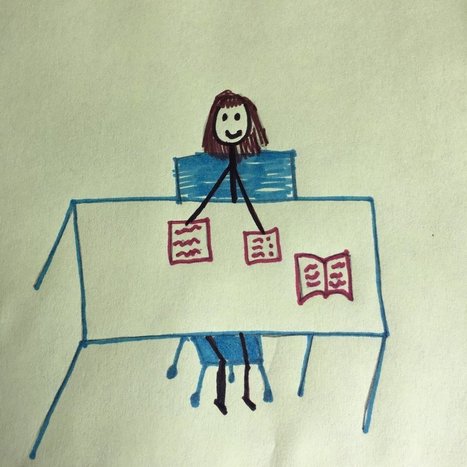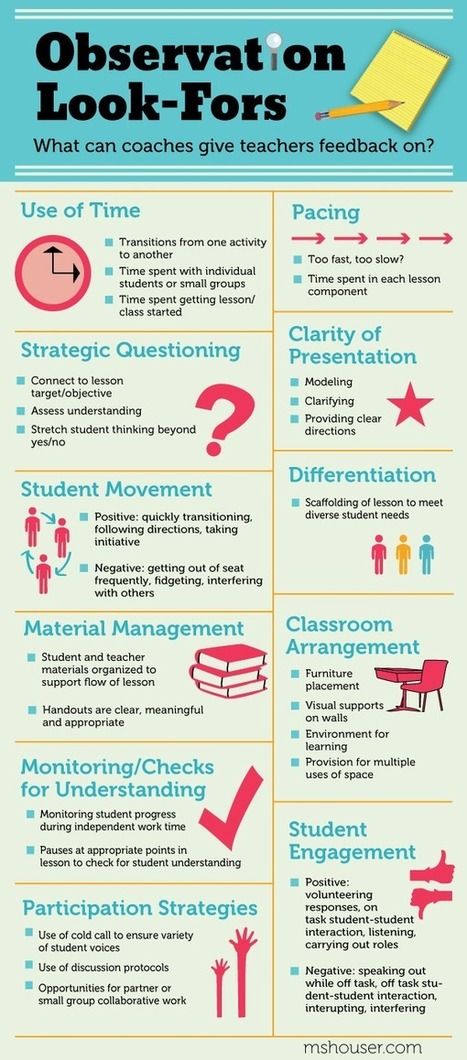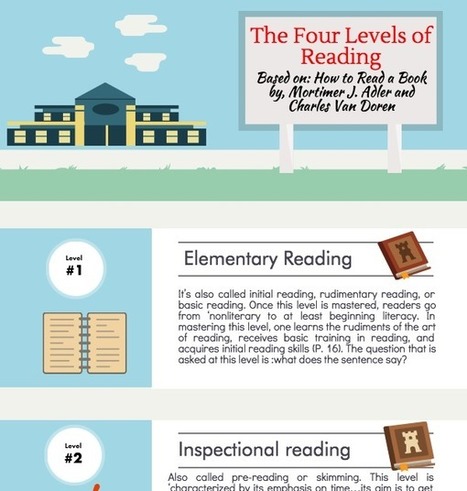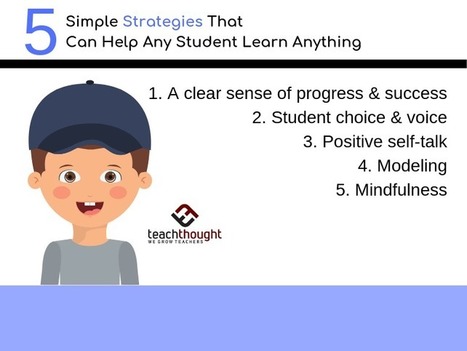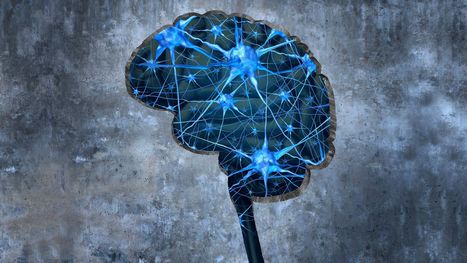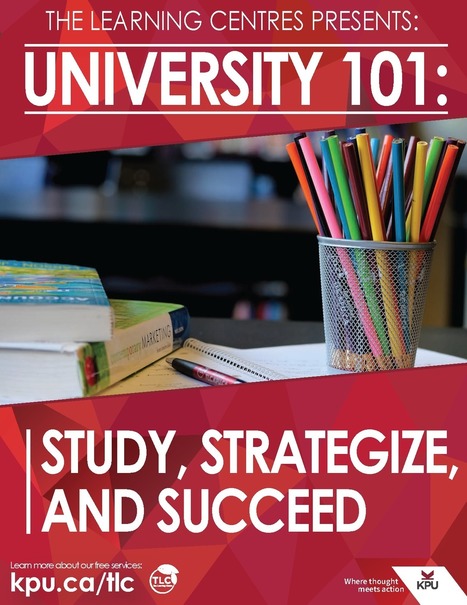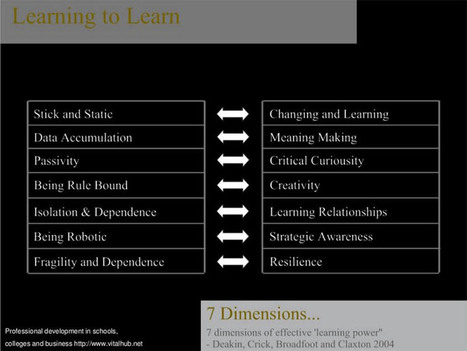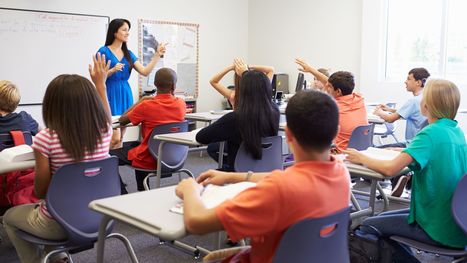 Your new post is loading...
 Your new post is loading...
Pay attention! This is something you, and everyone else, are likely to have heard at school and the teachers were right. Attention is almost always a necessary condition for learning. The problem is that attention wavers. It is difficult to sustain and we are easily distracted. There are distractions everywhere these days, your phone, notifications, vibrations, pings, rings. Learning has to compete with a lot of other things that compete for attention. Even within a learning experience online, the temptation to do something more entertaining nags away at users. We live in the attention economy and knowing what attention is, that modern online currency, is precisely why learning experience design matters, as formal learning is a different type of experience, requiring more sustained attention.
E-learning modules are created and deployed in order to fill a learning gap or bring some skills forward and drive a certain desired behavior. Sometimes employees are enrolled by their superiors, other times they log on to the platform and access what they need at a given time. Either way, a successful learning experience should result in some sort of change. Needless to say, quite often this does not happen, to the frustration of managers and L&D specialists who have invested in those interventions, and as a result expect them to have a positive outcome. It’s important to follow some steps before launching a course in order to make sure it has the best chances of succeeding in altering behaviors.
It was soon after my son enrolled in a local junior college that I realized something was wrong. Success, which seemed to come so easy to him in high school, was suddenly out of reach. In fact, he was failing every course! I quickly learned that in high school he did not have to exert any effort and was taught to simply memorize material. Sadly, this high school experience resulted in a new high school graduate who had no concept of time management, study skills, or critical thinking (McGuire, 2015). He had no idea how to take responsibility for his own learning, and despite my pleas that he needed to “study differently” in college, he had no idea what this meant or how to go about this task.
It can be a struggle to best help students understand what they are learning or for students to articulate their learning in meaningful ways. This was especially difficult for me starting out in on my teaching journey. Based on how I had been taught to be an educator the best ways to know if students are learning was to give them a test. If they failed, it was their fault and they needed to do better next time. It took me a long time to learn that in the process of learning the teacher and the student need to be partners.
Picture this: It’s Monday and Ms. D’Angelo, a seventh-grade science teacher in the South Bronx, gives her students a homework assignment about food chains that is due in one week. The assignment asks students to teach a family member about this concept by completing a model food chain together. The following Monday, Ms. D’Angelo is surprised to see that that some of her students seem to understand the material at a deep level—they even use new vocabulary terms with great fluidity. These same students appear be much more confident than usual when engaging in the class discussion. Ms. D’Angelo scans her grade book and notices that these students are the same the ones who completed the homework assignment.
This was the debate motion at the LPI conference in London. I was FOR the motion (Henry Stewart was AGAINST) and let me explain... 1. AI is a gamechanger AI will change the very nature of work. It may even change what it is to be human. This is a technological revolution as big as the internet and will therefore change what we learn, why we learn and how we learn. The Top Seven companies by market cap all have AI as a core strategy: Apple, Alphabet, Microsoft, Amazon, Tencent, Facebook and Alibaba.
“Student Voice” is something that many schools are focusing on and for a good reason. If we, as educators, understand that we serve our students and not the other way around, getting their thought and feedback for not only problems but solutions in moving our schools forward, is crucial. From my experience though, I have seen a lot of money, time, and effort, in getting thoughts and feedback from students, listening to their voice, and then often, no action based on what they have shared. Dean Shareski wrote a challenging post on this and shared the following thoughts on “Student Voice”:
The purpose of today’s post is to give students a resource to help them take charge of their own learning. We’re going to do a series of these over the next few weeks; today’s post is about retrieval practice – a useful method for studying any material that you’d like to remember in the future.
What is retrieval practice?
Learning does not start and stop with the training session. You have to take care of all the stages of learning transfer: before, during, and after training.
Via EDTECH@UTRGV
Monty Python’s “Always Look on the Bright Side of Life” may have been written as joke, but training our mind to focus on the positive has been proven to have both physical and physiological benefits.
Among other things, studies have shown that a positive attitude can help us cope with stress, improve our overall wellbeing, and even boost our immune system. Recently, researchers have also uncovered evidence that a positive attitude can impact our ability to learn and solve problems.
Wouldn't you be interested in finding out all those useful Tips To Improve Your Learning in just an infographic? Read this very useful and informative infographic that provides you with all those most important memory Tips To Improve Your Learning and start practicing today.
If letting students teach their own lessons sounds scary, take heart—it's one of the best ways for them to learn meaningfully and authentically. Here's how to do it right.
This naturally led to a conversation about portfolios. Portfolio discussions typically center on the tools: how to save, share, and publish student work. When we instead let the process of curating, reflecting, and sharing serve as the focal point, portfolios become summative in nature and can be viewed as an add-on to the end of a unit, project, or activity.
For portfolios to be truly valuable to both students and teachers, they need to provide insight into not only what students created as a representation of their learning, but also how and why they created it. If the ultimate goal is to develop students as learners, they need an opportunity to make connections to the content as well as the overarching learning objectives.
|
Why is content curation so relevant for learning? Because the best way to learn something is not by memorizing facts, formulas, numbers or dates as we are taught since elementary school. The best way to learn anything is by diving into it.
With video in learning one can feel as though one is learning, as the medium holds your attention but as you are hurtled forward, that knowledge disappears off the back. It’s like a shooting star; looks and feels great but the reality is that it burns up as it enters the atmosphere and rarely ever lands.
Learning anything comes with some kind of labour whether it’s time spent, a search for meaning, or a simple struggle to understand. After all, every learner is different. With those differences will come the process of overcoming learning barriers of every definition. You won’t always see them coming if you’re a teacher, but there are ways to help your learners get over them.
Here we have 6 of the most efficient methods for giving your learners the upper hand with overcoming learning barriers as they appear.
Real learning happens when learning “sticks.” Employing solid learning retention activities with your learners means using tools you can call on anytime to help students remember learning. The learning retention activities offered in the TeachThought article 15 Reflection Strategies To Help Students Retain What You Just Taught Them are among the simplest and the best for every teacher to use. Each one encourages the natural reflection process that helps our students absorb learning effectively.
How to Read a Book by Mortimer J. Adler and Charles Van Doren is one of the most celebrated classic works in the reading literature. It was first published in 1940 and then revisited and updated in an edition that was released in 1972. Since its publication millions of copies have been sold and is still widely circulating among education circles as a required reading text. It’s true that the book was conceived in a ‘pre-digital’ era but its content is still relevant even now that the digital text is predominantly prevalent.
Psychological Science in the Public Interest evaluated ten techniques for improving learning, ranging from mnemonics to highlighting and came to some surprising conclusions.
Sometimes the details former students recall from class is nothing short of amazing. A few years ago I had a student named Abby in my history class
Empowered with some basic information about how the mind and brain work during learning, teachers can plan to use some new strategies for supporting high student achievement.
Through the years we have facilitated the use of brain-based strategies that help foster growth mindsets through the internalization of learning successes, individual choice, positive self-talk, and teacher modeling. Teachers tell us that using these teacher-friendly tools can jumpstart the learning process early in the year.
Teachers have long known that rote memorization can lead to a superficial grasp of material that is quickly forgotten. But new research in the field of neuroscience is starting to shed light on the ways that brains are wired to forget—highlighting the importance of strategies to retain knowledge and make learning stick.
University 101: Study Strategize Succeed helps you to create a foundation for post-secondary studies by learning how to learn. By taking the time to read this book and work through the exercises included, you are investing in the skills that will support you in all of your classes and future learning. Successful students share a set of skills and habits in common. The good news is that these skills are not a secret; anyone can learn the skills that support successful learning. By taking some time to learn proven study strategies, you will be able to reach your learning goals, and avoid the pitfalls that can take you off-track.
Guy Claxton is professor of education at Bristol University, and author of Hare Brain, Tortoise Mind How Intelligence Increases When You Think Less (1997). Among other concepts, he is interested in how people learn.
And so are we, so that’s awfully convenient.
Over at teachingexpertise, they recently overviewed Claxton’s work, including four “new Rs”:
“Resilience: ‘being ready, willing and able to lock on to learning’. Being able to stick with difficulty and cope with feelings such as fear and frustration.
Resourcefulness: ‘being ready, willing and able to learn in different ways’. Having a variety of learning strategies and knowing when to use them.
Reflection: ‘being ready, willing and able to become more strategic about learning’. Getting to know our own strengths and weaknesses.
Relationships: ‘being ready, willing and able to learn alone and with others’.”
Strategies that target students’ metacognition—the ability to think about thinking—can close a gap that some students experience between how prepared they feel for a test and how prepared they actually are. In a new study, students in an introductory college statistics class who took a short online survey before each exam asking them to think about how they would prepare for it earned higher grades in the course than their peers—a third of a letter grade higher, on average. This low-cost intervention helped students gain insight into their study strategies, boosting their metacognitive skills and giving them tools to be more independent learners.
|

 Your new post is loading...
Your new post is loading...
 Your new post is loading...
Your new post is loading...





